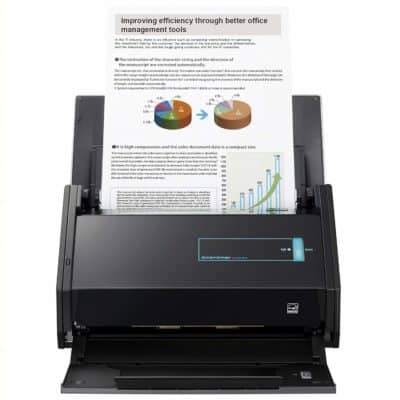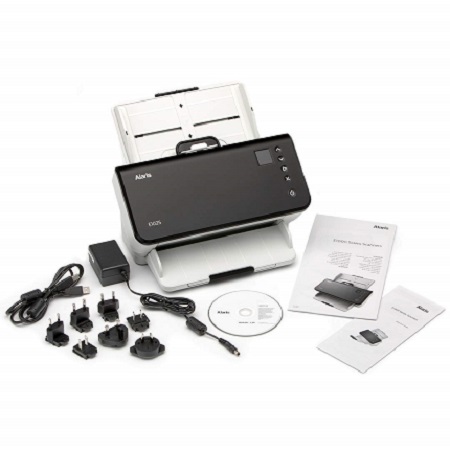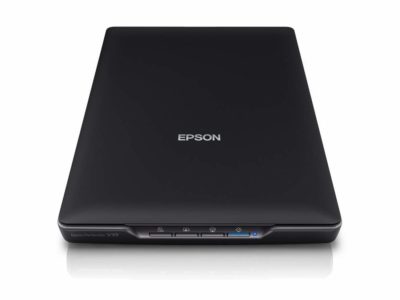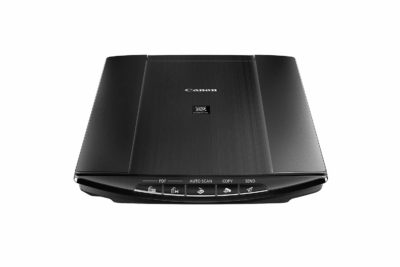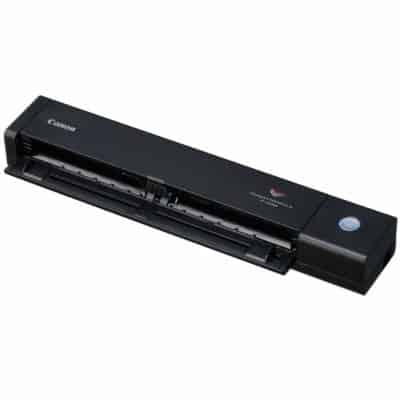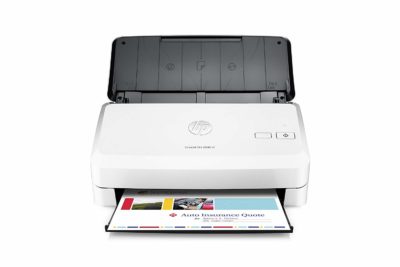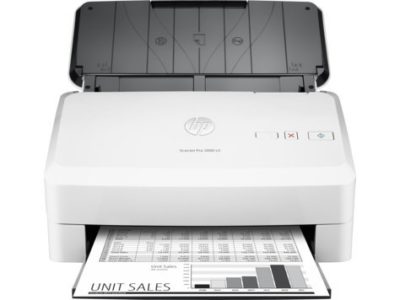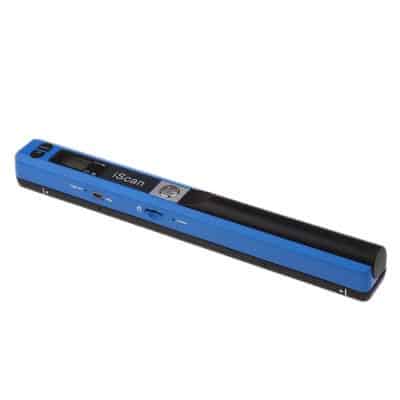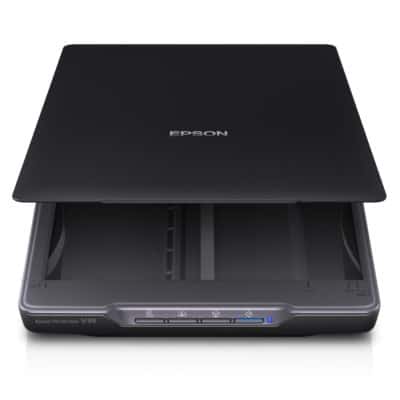Review of the Best 9 Scanners
A scanner is a useful office and home device to keep. It comes in handy when you need to send a copy of documents with a high resolution and quality.
They are mostly used where lots of papers need to be sent from one office to another. They are good for keeping a copy of your original document without spoiling it at all.
A number of different scanners are available in the market, and some are more technical than others. Choosing the right scanner is important and will be a useful tool for you to have.
In this review, you will read about how scanners function, steps involved, the best models available on today’s market, a comprehensive buyers guide and FAQs.
Top 9 Best Scanners in India
| Product (Best Brands) | Best Price |
|---|---|
Our Pick | |
Great Value For Money | |
Advanced paper feeding system | |
Another powerful portable option | |
Best Choice for Workstations | |
Best Sleek & High-Speed Document Scanner | |
Great value for less | |
Best Choice with Unique Features |
How Do Scanners Work?
Before we get into the bits and pieces of the mechanism behind scanners, it’s important to know that scanners occur in different types: Flat-bed, Sheet-fed, Hand-held and Drum.
- Flat-bed scanners: These are the most popular and are also known as desktop scanners. This section will dwell more on this type due to their wide range of use cases and their similarity to other types in terms of mechanism.
- Sheet-fed scanners: Sheet-feed scanners have a lot in common with Flat-bed scanners except that, as the name suggests, they feature an automatic feeding mechanism that feeds the document to the scanning head rather than a stationary bed used by flatbed scanners.
- Hand-held scanners: These are based on an identical technology to the previous types but are unique in the sense that they are portable and need the user to move them over the document as opposed to flat-bed scanners, which rely on an automatic feeding belt.
- Drum scanners: These are quite popular in large scale publishing, and they are particularly effective when you want to scan highly detailed images. The technology behind their sheer precision and clarity is the Photomultiplier Tube (PMT).
Key components of the mechanism are the glass cylinder, a colour filter and a photomultiplier tube. When the document is placed on the glass cylinder, a beam of light is illuminated on the document.
Reflected rays from the document are directed towards a sensor situated at the centre of the cylinder, which separates the light into three beams.
These are then passed through the colour filter before being directed to the Photomultiplier tube, where they are converted to electrical signals.
The general principle behind all scanners is to analyse a specific text or image and process it to a level where you can save it on an external device, such as a personal computer, where you can also conduct additional operations such as editing.
As we already expressed in the beginning, this section will dwell on the Flat-bed scanner mechanism as it bears a striking resemblance to other types and because it is the most popular in existence.
Before we go into the functional details, let us lay the ground by considering the key components of a scanner. These include the Charge Coupled Device (CCD) array, the scan head, Glass plate, Mirrors, lens, lamp. Belt, filters, and power supply system.
The Charge Coupled Device
The Charge Coupled Device (CCD) array is the key aspect of the Flat-bed scanner in the sense that it is the key element responsible for the actual conversion of light into electrical charges, which can easily be processed for further usage.
It constitutes light-sensitive diodes which give it this property by producing electrical charge after exposure to units of light known as photons.
A fancy term for these diodes is Photosites, and the amount of charge they produce is directly proportional to the amount of light or photons in contact.
So What Steps are Involved?
Firstly, the document is positioned on the glass plate before the cover is closed. The cover’s underneath the surface is typically flat and white though some exceptions take a black colour.
The flatness and uniformity of the cover ensure that the scanner has a clear reference point that can easily be used to deduce the document’s actual size in question.
In most cases, the cover can be removed to accommodate large items, such as a larger document or book.
The lamp serves as a source of light for illuminating the document. Different types of lamps are used in different scanners.
Some take a more modest approach by incorporating a Fluorescent lamp, whereas others incorporate Xenon.
The scan head integrates a number of components, including the CCD array, mirrors, filter and lens. It accesses the document by means of an automated belt which is powered by a motor.
To enhance stability and uniformity, the head is secured to a stabiliser bar. You will often meet the word “pass” in scanners’ circles. It implies that the scan head has gone through a single cycle of the scanning process.
The mirrors are used to reflect the document’s image. Once the document is illuminated, an angled mirror reflects it’s image to another mirror.
The number of mirrors varies between scanners. While some incorporate only two, others add an extra mirror to enhance the process.
The mirrors are also designed so that they are curved to reflect the produced image on a narrow surface area.
The lens’s purpose is to direct the image reflected by the last mirror to the filter before it hits the CCD array. Like the mirrors, the arrangement of the filters and lens differs with different scanners.
A number of scanners utilize what is known as a three-pass mechanism that utilizes three filters. In this case, each colour filter specializes in a specific colour, which can be blue, green or red, where each filter comes into play per pass.
Upon completion, the responsible software merges the three images to form a complete image with all the qualities.
The majority of today’s scanners utilize the single-pass mechanism. When the image hits the lens from the last mirror, it is divided into red, green and blue components.
Each component is then passed through the filter before being directed to specific CCD array areas, where they are recombined to form a completed image.
An alternative array technology has emerged on the scene to compete with the CCD array to provide a less expensive and lighter option. The technology is referred to as Contact Image Sensor (CIS).
The CIS eliminates the need for filters and mirrors to adopt an array of light-emitting diodes and 300 to 600 sensors placed in close proximity to the glass plate that holds the document.
Once the document is illuminated, the sensors capture the document’s image, converted it to an electric charge for further processing.
The process of scanning itself is not the end of the story. The processed image must be transferred to the computer, which does the extra processing in order to make the image useful.
The information from the scanner can be transmitted to the computer in several ways. These include the much familiar Universal Serial Bus (USB), Bluetooth, Small computer System Interface (SCSI), Firewire and Parallel port.
USB and Bluetooth scanners provide the most popular, easiest, efficient and practical option, whereas the other options usually come in combination to provide more flexibility.
For the computer to communicate with the scanner, you need appropriate software called a driver.
The driver communicates with the scanner in a programming language, such as TWAIN and then interprets the language to an application within the computer such as Adobe.
What to Look For while purchasing
Buying the high-speed document scanner for your needs requires a clear understanding of the following key aspects.
Type
As discussed above, scanners occur in different types, and these have their own characteristics rendering them suitable in different circumstances. Let’s have a quick look at a few considerations connected to each type.
Flat-bed Scanners
From what we’ve seen in the previous section, Flat-bed scanners are the most popular for obvious reasons.
They are usually easy to use, do not require a lot of space, and are one of the most versatile as they can be used to scan a good range of products, including books, documents, photos and other three dimensional items.
Sheet-fed Scanners
Sheet-fed scanners provide several advantages. They are the ideal choice when you are looking to use a scanner for high volume work without too much concern for overall image quality.
Their automatic feeding mechanism makes them ideal for unsupervised work by eliminating all the manual work involved with positioning the document as in Flat-bed scanners, thus allowing for more efficiency.
Sheet-fed scanners tend to be prone to distortions; thus, the quality may be lower than Flat-bed scanners.
Furthermore, since only one sheet can be accommodated in the automated mechanism, it cannot be used to scan pages from bulky documents and books.
Hand-held
Hand-held scanners are designed to provide a scanning solution for a mobile lifestyle or work ethic. They can easily be carried around to perform light scanning duties.
A good number of mobile scanners are adapted to specific functions such as barcode and business card scanning.
Drum scanners
As put forth in the above section, drum scanners are more for heavy-duty and industrial scanning. They are particularly bulky and more expensive.
Unless you want something for industrial use, most of them are definitely not ideal for basic office or home usage.
Key specifications to consider
The following key specifications will go a long way in assisting you to have an idea of what to look for when presented with several equally good products.
Image Sensor
Modern scanners utilize two main types of sensors, mentioned in the previous section,: CCD and CIS.
CIS-equipped scanners provide a more portable, less expensive, and faster option, but they sacrifice effectiveness as they provide lower image quality than Flatbed scanners.
Resolution
Resolution is an important factor in the quality of any image produced by the scanner. Its unit of measurement is dots per inch (dpi), and It describes how much information a particular scanner can absorb from the original image.
The higher the resolution, the greater the quality. Scanner’s resolution can be described in two main types, namely interpolated and optical resolution.
To spare you from the headache associated with the involved technicalities, optical resolution is the most important parameter as the interpolated resolution can be enhanced by several editing programs.
It is common practice that manufacturers indicate two figures to represent the resolution. In this case, the optical resolution is usually represented by the smaller figure.
For instance, a 400 x 600 dpi resolution indicates that the scanner’s optical resolution is 400 dpi.
When it comes to optical resolution, 300 dpi is enough for an average scan, whereas 600 dpi is great for high-quality documents or images.
Extensive graphics usually require about 1200 dpi, whereas other advanced use cases such as film require up to 3200 dpi resolution.
Bit Depth
Bit depth is also commonly referred to as colour. It describes the amount of data that the scanner can capture in a single pixel.
The quality of the image in terms of colour increases with the Bit depth, as it means that the scanner is able to capture a greater number of colour or grey variations.
Additionally, a greater Bit Depth also implies greater file size as it means more data retrieved from a single pixel.
Average scanners tend to fall within the range of 24 to 36 bits in terms of Bit Depth, while high-end devices can extend the range up to around 24 to 36 bits.
Dynamic Range/optical density/ density range
Dynamic range refers to the ability to capture varying tones within the scanned image. It describes the difference between the scanner’s highest and lowest optical density.
The larger the difference, the greater the range, which then translates into better quality in the resulting image.
The DR is specifically quantified on a conventional scale, grading it from 0 to 4 where 0 stands for perfect white, as 4 stands for perfect black.
Most scanners are produced for general users; thus, they are usually void of any dynamic range specification. However, if you are up for a high-quality scanner, it helps a lot to consider these parameters.
For reference’s sake, mid-range scanners usually fall within the 2.8 to 3.2 range, whereas high-end devices tend to be 3.3 upwards.
Connection
As we pointed out earlier, three main connection methods exist (USB, SCSI and parallel), each with its own advantages and disadvantages.
USB offers the commonest as it is widely supported and offers an easy-to-use, plug-and-play mechanism.
Another technology, known as Firewire, which is somehow similar to USB, provides for greater speeds and efficiency though it is not as widely supported as USB functionality.
The SCSI is usually featured in high-end devices and provides an even faster connection, but it faces the same downside as Firewire as it does not enjoy the same compatibility as the USB.
Speed
Speed becomes more relevant when you intend to use the best photo scanner on a regular basis throughout the day. In general terms, other factors such as resolution and depth profoundly influence the scanner’s speed.
Greater resolutions and bit depths usually need a greater amount of time. When it comes to scanners, speed can be described differently, such as seconds per page or the number of scanned pages in a single minute.
Software and compatibility
Most scanners come with a software package that includes a driver program, Color Calibration Program, Optical Recognition Software, and editing programs.
The Windows operating system usually works with the TWAIN driver software, which connects the scanner and an application.
The Color Calibration Software is responsible for maintaining the integrity of image colours as intact as possible throughout the process. This helps to keep the resultant image as equal to the original as possible.
Editing software allows us to make a few adjustments to the image by offering options for adjusting brightness, size and other parameters.
The OCR allows you to change the image’s text into editable computer text through a specialized character recognition mechanism. Top of the range OCR’s incorporates a wide range of languages as well as different text formats.
1. Fujitsu ScanSnap Sheetfed Scanner
The Fujitsu ScanSnap iX500 is a compact black color duplex scanner that is compatible with PC and Mac. It also allows efficient and high-quality wireless scanning from iOS or Android mobile devices.
The sheet-fed scanner is useful in sorting out important paperwork and documents at home or office. Moreover, the scanner is easy to use and ensures super-fast printouts of the scanned documents.
- Dimensions: 29.2 x 16.8 x 16 cm
- Weight: 2.99 kg
- Type: sheet-fed scanner
- Resolution: it comes with an optical resolution of 600 dpi
- Speed: 25 ppm of colour scans
- Connectivity: USB 3.0 and Wireless WiFi 802.11bgn
- Power consumption: 20 watts
- Compatibility: it works with PC, Mac, and iOS or Android mobile devices
- Battery type: 2 lithium-ion batteries each having an energy content of 2 watt-hours
- Micro-processor: built-in GI microprocessor
- Comes with an advanced paper feeding system
- Ensures smooth and fast scanning
- Ergonomic design and easy to use
- No negative points were observed.
2. Kodak Alaris E1025 Document Scanner
Kodak is a renowned traditional brand that supplies all sorts of camera accessories. With the new Kodak Alaris Scanner, the brand keeps up with the promise of always presenting the best. It will surely make your home and office work more manageable and help you work swifter.
- It is a sheetfed type paper media scanner, and it functions best at 240 Volts and 36 watts.
- With its negligible noise level of 50 dB, you won’t feel a thing.
- It has 1200 Resolution and 25 ppm max print speed monochrome.
- Its intuitive user-id helps start scanning within 10 secs.
- The Kodak Alaris E1025 has Smart Touch technology that reads barcodes, scans and sends information in one touch.
- The prompt Scanning service covers small delicate passport-like documents effortlessly. Without power cords or a USB, it scans ID cards and even smaller and fragile documents.
- The optical character recognition enables this scanner to produce a scan clearer than the originals, zestfully raising image quality.
- The active feed technology with a built-in paper path ensures no untimely jams. It jogs pages to avoid misfeeds along with the controlled output for orderly paper stacking.
- The Kodak Alaris E1025 is a smart scanner with auto-brightness and smart touch features, making it simple to use and requiring very little space.
- The Kodak Alaris E1025 has Smart Touch technology that reads barcodes, scans and sends information in one touch.
- The prompt Scanning service covers small delicate passport-like documents effortlessly. Without power cords or a USB, it scans ID cards and even smaller and fragile documents.
- The optical character recognition enables this scanner to produce a scan clearer than the originals, zestfully raising image quality.
- The active feed technology with a built-in paper path ensures no untimely jams. It jogs pages to avoid misfeeds along with the controlled output for orderly paper stacking.
- The Kodak Alaris E1025 is a smart scanner with auto-brightness and smart touch features, making it simple to use and requiring very little space.
3. Epson Perfection Photo and Document Scanner
Epson V39 presents another gem from the Epson brand, which a wide range of users has hailed. It enjoys exceptional reviews to back up the unique features set. Let’s have a look.
- Design and dimensions- The design is somewhat similar to the Canon LiDE 220. It comes in an all-black and minimalistic design with four major functional buttons (PDF, send, copy, start) and a LED light placed in a similar position.
- The dimensions measure 36.6 x 25.1 x 3.8 cm width, depth and height and 1.54 kgs. A unique structural feature is a stand that allows an upright scanning position
- Type-Flat-bed scanner
- Sensor-Contact Image (CIS)
- Scan resolution-It has an optical resolution of 3800 dpi
- Speed-The scanner can handle a 300 dpi image in 10 seconds, whereas a 600 dpi image can take about 30 seconds
- Bit depth-The Color Bit Depth is rated at 48-bits as the greyscale rates at around 16 bits
- Maximum Scan size-It can scan up to 8.5 x 11.7 inches
- Supported scan formats-JPEG, PDF
- Operating system compatibility-It integrates with Mac OS 10.6-10.10 and Windows XP-10
- Connectivity-USB 2.0
- Power features-It uses a 5V USB port and consumes about 2.5 watts during operation
- Software-It comes with 6 additional software to enhance user experience including Easy Photo Fix technology, Epson Event Manager and Easy Photo Scan
- Warranty-1 year term
- Efficient-The scanner is among the fastest and most accommodative in terms of paper sizes and media
- Exceptional image quality-The high resolution is reflected in an evidently enhanced image quality
- User-friendly-It provides an easy interface and an ample supply of additional software
- High-end price tag for office scanners
4. Canon Canoscan Scanner
The Canon Lide 220 serves another delicacy in the scanners’ world due to the superior features it offers for a seamless user experience. It boasts of one of the most advanced systems along with an attractive design and is the Best Photo Scanner.
Let’s put it under the magnifying glass and see if it’s worth the reputation it enjoys.
- Design and dimensions-A simplistic, sleek all-black design adorns the scanner. The front holds four buttons for sending, auto scan, copy and PDF functions, as all the connection and power ports are situated at the back. It also features a Z lid which can be adjusted up to 20mm
- Type-It is a flat-bed scanner
- Scan element-CIS
- Scan resolution-It has an optical resolution of 4800 x 4800dpi. Duty cycle ( workload).Approximately 2000 pages per day
- Bit depth-It is rated at 48 bit input and 48 bit output for color images, while grayscale images are rated at 16 bit input and 8 bit for output
- Speed-For coloured image it scans at about 2.2 milliseconds per line for resolutions of up to 300 dpi, and 3.2 milliseconds per line for images of up to 4800 dpi
- For grayscale images, it scans at about 2.2 milliseconds per line for resolutions of up to 300 dpi, whereas resolutions of up to 4800 dpi scan at a rate of 11.1 milliseconds per line
- Document size-It can handle up to 216 x 297mm of A4
- Supported scan formats-JPEG, PDF, TIFF, PNG
- Driver software-TWAIN version 2.1, ISIS and WIA
- Operating system compatibility-Windows XP-10, Mac OS X v10.6.8
- Connectivity-USB 2.0
- Power features-Power is supplied through the USB port, and it consumes up to 2.5W during operation
- Warranty-It comes with a one year limited warranty
- Efficient-The fast CIS element coupled with impressive speed ratings and capacity makes the scanner ideal for a busy office environment that predominantly uses standard A4 papers
- Enhanced image quality-It holds one of the most impressive resolutions for both colored and grayscale documents.
- Compatibility-It integrates with the most widely used operating systems
- User-friendly-It features conveniently placed controls and a comprehensive software package to create a user-friendly experience
- Beautiful design-It features one of the sleekest designs on the market to fit in the most modern office or home environments
- The price is on the high end of devices within the same range in terms of abilities
- It does not support other types of connections such as parallel and SCISC
5. Canon Personal Document Scanner
Simplicity and efficiency are embodied in this interesting device from Canon. It is part of a long legacy of models from the brand which are known for their superiority in terms of functional features and solid construction properties.
Let’s breeze through what it has in store.
- Design- The scanner takes an all-black, compact, sleek design typical of most hand-held scanners with a few unique features. The document feed area is located in the front panel, as the power button rests on the top surface. The back houses the power and storage interface.
- Dimensions measure 38.7 x 14.6 x 12.1 cm, as the weight is placed at around 590g
- Type-Sheet-fed scanner
- Sensor type-It utilizes a form of Contact Image Scanning device known as CMOS CIS 2 Line Sensor
- Scan resolution-It has output optical resolutions of 150 dpi, 200 dpi, 300 dpi, 400 dpi, and 6000 dpi
- Speed-8 papers per minute for both coloured and black-and-white documents
- Daily capacity-Ideally 100 scans
- Maximum paper size-Paper width and length ranges: 0.8-216mm, 70-356mm
- Supported scan formats-JPEG, PDF
- Operating system compatibility-It integrates with Windows XP-10 and Mac OS
- Compatible Drivers and added software-It integrates with TWAIN drivers for Windows, ISIS and works with software such as CaptureOnTouch, CaptureOnTouch Lite for both Windows and Mac OS
- Connectivity-It uses USB 2.0 and comes with the Silex C-6600GB Scan-and-Print Server which allows for the conversion of USB to network interface connection
- Power features-USB cable
- Feeder capacity-10 sheets
- Warranty-1 year term-limited warranty
- Ultra-efficient system-The scanner operates at a competitive speed and has a relatively high sheet capacity for an office-grade Sheet-fed scanner
- High resolution-The resolution is more than enough for a high-quality scan image quality
- User-friendly-It is easy to both install and operates for first-time users
- Durable-The hard plastic, compact build quality along with a proven cohesive system, ensure a relatively long lifespan
- It is more expensive when compared to most scanners within its category
- It is not as suitable for high volume scanning
6. HP Sheet-feed Desktop Scanner
The HP L2759A is an indispensable model on the list as it excels in almost all the key aspects, as discussed above.
An ultra-sleek design that should work with most workstations plus an exciting feature set should provide more than enough value for the associated price tag. Let’s delve deeper into the specifics.
- Design and dimensions- The scanner comes in a sleek, all-white body with a printout tray in front and a black, obliquely oriented feed tray situated at the back.
- The main body’s top surface holds the power button and corresponding LED indicators, as the back holds the interface for external connections and the power port.
- In terms of size, the printer measures 17.27 x 29.97 x 15.24 cm as the weight is placed at around 2.590kgs
- Type- It is a Sheet-fed scanner with the feed situated at the back
- Scan resolution- Its optical resolution measures up to 600 dpi for both coloured and monochromatic text or images
- Duty cycle- An ideal daily workload is 2000 pages/day
- Bit depth- It provides one of the highest-rated Bit depths for office printers as it is rated within the range of 24-bits to 48 bits
- Speed- The scanner takes about 6.9 seconds to process a 4×6 in the colour photo, 9.13 seconds, to conduct an OCR of an A4 paper. It can also work in sync with your email by scanning and saving it straight to the email in approximately 10.64 seconds
- Supported types of Media- It covers almost all paper-based media such as standard A4 paper, business cards, checks, and freight bills
- Supported scan formats- JPEG, PDF, TIFF, PNG, BMP, Text (.txt), Rich Text (RTF)
- Driver software- TWAIN version 2.1, ISIS and WIA
- Additional features- It incorporates a wide range of extra features including auto-crop, auto-rient, OCR, scan-to-email functionality, auto-color detection, PDF security, background cleanup, and auto-exposure
- Automatic document feed features- Capacity: 50 sheets
- Speed: 30 papers per minute- Automatic document feeder capacity: 50 sheets of paper.
- Operating system compatibility – Windows 7-10, Mac OS, Yosemite 10.10 and Mavericks 10.9
- Connectivity- USB 2.0
- Power features- It requires at least 64 V and consumes up to 3.6 watts during operation
- Warranty- It comes with a one year limited warranty
- Highly efficient-The speed and capacity specifications allow for a highly efficient option in a busy office environment
- High quality image output-The competitive resolution and Bit depth provide for an above-average quality of images
- Compatibility-It integrates with most popular operating systems thus making it a highly versatile tool across a wide range of devices
- A powerful set of extra features-It provides room for a commendable range of extra features, some of which are among the most scarce
- Aesthetically pleasing-It comes in a beautiful design that can blend in most office environments
- High-end price tag
- It only has USB for external connections; thus, it may be difficult to use in cases that need other modes of connections
7. HP ScanJet Sheet-feed Scanner
The HP Pro 3000 s3 provides a classic option if your budget allows for a few more dollars to dispose of on a scanner.
The robust price tag is quickly backed by one of the most advanced features sets ever seen for a scanner of its size.
- Design and dimensions-It may well be considered as an upgrade of the HP L2759A as it comes in an essentially identical build featuring a similarly built sleek, white body with a back placed Sheet-feed and a front paper tray.
- The top surface holds the power button and a number of LED lights, as the back holds the necessary power and storage ports.
- When it comes to size, the scanner measures 19.8 x 31 x 19 cm in width, depth and height, as the weight lingers at around 3.4 kg
- Type-Sheet-fed scanner
- Sensor-CIS
- Scan resolution-It prints up to 600dpi for both coloured and monochrome images. Feed capacity and speed 50 sheets, 35 papers per minute.
- The duty cycle-It can handle 3500 pages per day
- Bit depth-24-48 bits
- Operating system compatibility-Windows 7-10, Mac OS, and OS X El Capitan 10
- Connectivity-USB 2.0 and wi-fi capability
- Speed-5 to 7 seconds for both coloured and greyscale images
- Power features-It uses the USB port
- Warranty-1 year term
- Efficient-It has a high speed and capacity rating
- Top-notch image clarity-A high resolution is supported by the demonstrable image quality
- User-friendly-Easy installation process along with simple and conveniently placed control buttons
- Durable-It features solid construction and a well-built, functional unit
- It is on the expensive side
8. Canon LiDe300 Scanner
The Canon LiDE 300 furnishes a great lower range alternative that provides much more for its price tag. The overall performance and build quality are typical of Canon products.
- Design and dimensions-The scanner comes in with a sleek, all-black design with a standard look unique to Canon scanners as we witnessed earlier on. The front holds four major buttons for autoscan, copy, PDF and send.
- The dimensions measure 36.7 x 25 x 4.2 cm at 1.7kg
- Type-Flat-bed scanner
- Sensor-CIS
- Scan resolution-Its optical resolution is rated at 2400 x 2400dpi
- Maximum Scan size-It accommodates up to 216 x 297mm documents.
- Bit depth-48 bits for coloured image and output input, 16-bit input and 8-bit output for greyscale
- Operating system compatibility-Compatible with Windows 7-10, and Mac OS X 10.11-10.13
- Driver software-TWAIN 2.O
- Connectivity-It works with USB 2.0
- Speed-2.2-14 milliseconds per line for coloured images while greyscale images fall within the 2.2-4.3 millisecond per line range
- Power features-It uses the USB port
- Warranty-1 year term
- Highly efficient-It operates at a superior speed
- Enhanced image quality-It has one of the highest output resolutions
- User-friendly-Easy to operate
- Durable-It has a solid construction quality
- The scanner is not ideal for high volume printing
9. Epson Scanner
A wave of positive reviews precedes its superior features set, which is rather identical to the V39 except for a few software-related features.
Some of the unique software features which come with the V39 include Scan-to-Facebook, Google Drive, and a range of cloud services. Let’s consider the details.
- Design and dimensions-Overall design is essentially the same except for some miniature differences in dimensions as this model is slightly larger but with less weight.
- It weighs 1.5 kg and measure 24.9 x 36.4 x 3.9 cm
- Type-Flat-bed scanner
- Sensor-Contact Image (CIS)
- Scan resolution-It has an optical resolution of 3800 dpi
- Speed-The scanner can handle a 300 dpi image in 10 seconds, whereas a 600 dpi image can take about 30 seconds
- Bit depth-The Color Bit depth is rated at 48-bits as the grayscale rates at around 16 bits
- Maximum Scan size-It can scan up to 8.5 x 11.7 inches
- Supported scan formats-JPEG, PDF
- Operating system compatibility-It integrates with Mac OS 10.6-10.10 and Windows XP-10
- Connectivity-USB 2.0
- Power features-It uses a 5V USB port and consumes about 2.5 watts during operation
- Warranty-7-day return period after dispatch
- Highly-Efficient-It features colossal speeds and capacity for an office scanner
- High-quality image output-Achieved by high resolution
- User-friendly-It is easy to install and operate. Attractive build quality and aesthetics
- Durable-It features solid construction and a highly cohesive system
- It has a short warranty period
Frequently Asked Questions
1. What is the best portable scanner?
The best portable scanners are:
Fujitsu ScanSnap Sheetfed Scanner
Canon Canoscan Scanner
2. Which all in one printer has the best scanner?
The all-in-one printers with the best scanners are as follows:
HP OfficeJet Pro 8026 All-in-One Wireless Printer
HP DeskJet 2131
3. What scanner works best with Windows 10?
The scanners which work best with Windows 10 are as follows:
Canon LiDe300 scanner
HP ScanJet Pro 3000 s3 Sheet-feed Scanner
HP Sheet-feed Desktop Scanner
Epson Perfection V39
4. What should I look for when buying a scanner?
When buying a scanner, ensure that you know the types of scanners, which include flat-bed, hand-held, sheet-fed, and drum scanners. Choose a type that will meet all your requirements.
It is also important to check its scan speed, resolution, compatibility and connectivity.
We have provided a comprehensive buying guide in this article. This guide explains all the essential factors which you should look for before making a purchase.
5. Which image sensor is the best between the CIS and CCD array?
CCD arrays provide a more powerful option in terms of image quality, but CIS enjoys more popularity due to its superior speed and lower cost.
6. Does the price of a scanner necessary translate into better quality?
Though greater prices tend to accompany scanners with more features, you may not always see scanners that live up to their price tag. The best thing to do is to be as informed as possible before purchasing any device.
7. Between Bit depth and resolution, which one is the most important parameter?
The resolution provides a more relevant and less sophisticated parameter to understand; thus it carries more weight.
Conclusion
A scanner has become a common office item, and is a very useful device for you to have at home. Whether it is being used for scanning photos or documents, they are easy to use and convenient.
Nowadays they come in compact sizes and can easily fit in the corner of your office or study room, next to your computer. Use a scanner for sending documents and images that provide you with clear quality.
While choosing a scanner for yourself, keeps all the mentioned things in mind, you pick the best one suited for you.
Our top picks for you are Epson Perfection Photo and Document Scanner, Fujitsu ScanSnap Sheetfed Scanner and Canon Canoscan Scanner.





